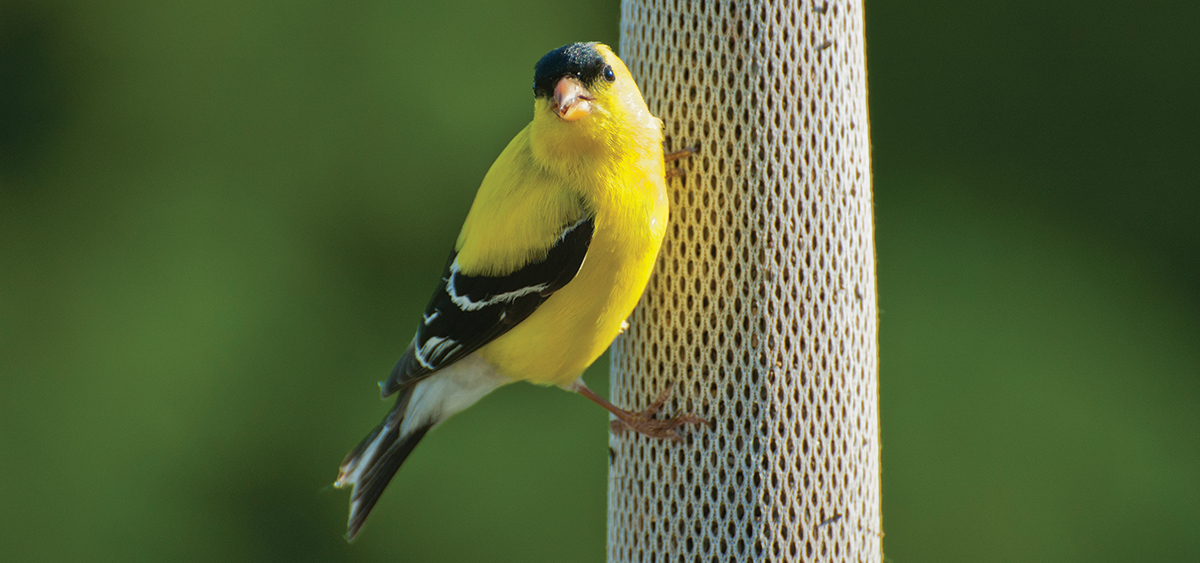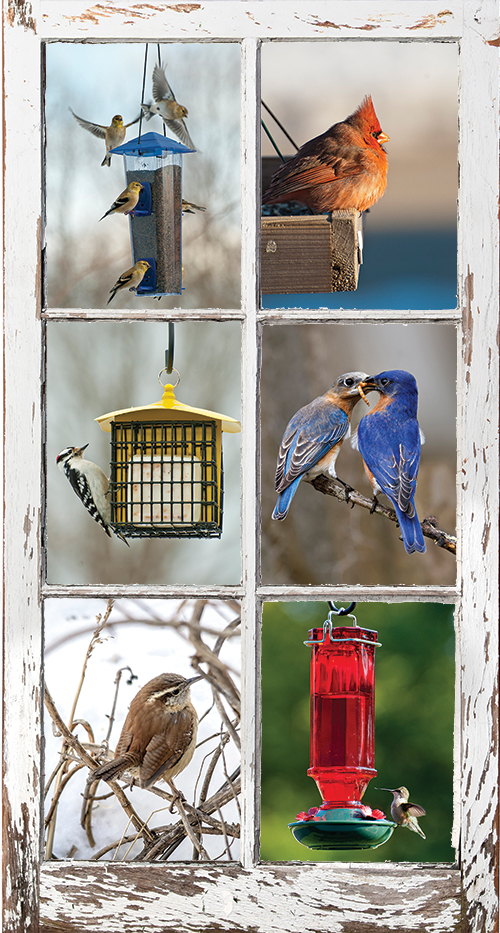
By Kristen Hannum
Gardening with an eye to attracting birds, plus the butterflies and bees that come along with them, means gardening with a completely different mindset than we’re used to. So why do it?
The joy of creating a lively home for a wide variety of colorful, lively birds turns out to be reason enough for most gardeners. But there’s more: Gardeners report that an amazing satisfaction comes with doing something to help threatened birds. The Audubon Society and the U.S. Department of the Interior say there’s been a 70 percent decline in populations of common backyard birds since 1967. If everyone made just a corner of their yard more bird friendly, that could help turn those declines around.

“So many problems seem beyond individual action,” says Dr. Stephen Kress, vice president of bird conservation for the Audubon Society. “But we can make a difference for birds.”
The best place to start, says Dr. Kress, is in your own backyard.
It’s not difficult. Simply think in terms of being a good host, making sure that your little guests have refuge, food and water, and that you don’t accidentally poison them with pesticides or herbicides.
Bird’s eye view
A birdfeeder is a good beginning, a first hop toward seeing your property from a bird’s point of view. The busy little birds at the feeders near a window are undeniably entertaining. Birdfeeders can also help wintering birds make it through the coldest days.
Birdfeeders, however, are perhaps a bit more for us than for the birds. Both Dr. Kress and George Adams, author of Gardening for the Birds, How To Create a Bird-Friendly Backyard, say it’s far better to landscape with a variety of native shrubs, trees, flowers and grasses that provide a year-round supply of food for the birds. “Birdfeeders tend to attract the noisiest and bossiest birds, birds that attack or chase away the beautiful, small songbirds,” says Adams.
Birds’ names can be a guide to what to plant for them. Cedar waxwings love the little berries on red cedars; that is, eastern junipers. Pinyon jays will seek out piñon pines for their delicious little nuts. Yellow-rumped warblers used to be called myrtle warblers because of their taste for wax myrtle berries. Adams’ book has a guide to regional plants and birds, with specific advice for different species. Your state Audubon Society can also help with specifics.
Plan a garden that will produce seeds and berries for the birds year round.
Caterpillar baby food
Native shrubs area also important because they host native insects. We’ve all become accustomed to thinking that insects need to be wiped out, but that’s completely wrong from a bird’s point of view. Caterpillars are the major source of protein for many nestlings, making the native plants that host caterpillars especially important for baby birds. (Not to mention butterflies!)
Those native plants are the ones that birds depend upon for food, refuge, and homemaking. Again, says Adams, the birds’ names sometimes tell you what to plant. The little cactus wren depends on cactus thorns to discourage predators from reaching its nest. Pine warblers usually build their nest in pines, binding pine needles together to make a cup-shaped nest.
When native trees aren’t available, birds are forced to live in exotic trees. That makes them and their nests more vulnerable to predators.
Birds do not thrive amidst endless acres of chemically treated lawns, which are dangerous, unprotected food deserts that provide neither food or shelter.
Location, location, location
Suitable nest boxes can be one of the simplest things you can do to increase the variety of birds on your property, although just putting out a nest box and forgetting about it isn’t helpful. Just like teenagers’ bedrooms, nest boxes need to be thoroughly cleaned out at least once a year.
Don’t choose a birdhouse by its cuteness scale. That darling Victorian may be completely wrong for the birds you’re hoping to attract. Bluebirds, for instance, need doors that are one and a half inches in diameter. That discourages larger birds, namely aggressive starlings, from moving in and taking over.
Another feature to look for in a birdhouse is a hinged roof. Once you’ve tried to clean out a birdhouse that doesn’t have a hinged roof, you’ll find yourself a convert to that type.
Dr. Kress says that just as in the human real estate market, location is key to successful birdhouses. For bluebirds, that means out in open habitat, so that pushy little house sparrows don’t take it over.
Gardeners in rural areas, like so many of Alabama Living’s readers, are especially well equipped to help birds because so many of them also favor rural life.
Nestwatch.org gives great advice on birdhouses, and the Audubon Birdhouse Book: Building, Placing, and Maintaining Great Homes for Great Birds is another excellent resource.
Bird-size puddles
Birdbaths really are for bathing. Cleanliness is key to staying warm, cooling off and flying right if you’re a bird. A birdbath is an easy and often beautiful addition to the garden. Buy a pedestal type and put it near protective shrubbery to keep the birds safer from cats. Birdbaths are especially important in arid areas, but even if you live near a lake a puddle-sized birdbath will attract visitors. “Puddles are more their size,” Dr. Kress says.
Water with a dripping action is especially popular.
Adams urges gardeners to take on the difficult challenge of providing thawed water for birds in the winter. Winter sun may do the trick, but he advises going for guaranteed results by installing a stock tank de-icer or heating element especially designed for birdbaths.
The magic of doing good
Keeping fresh water in birdbaths and putting in native plants may sound like work, but it’s satisfying work.
“I know a lot of people who started out with sterile backyards and transformed them into great bird habitats,” says Dr. Kress. “They talk about how much fun it is.”
One of Adams’ readers reported how easy it was to change their boring backyard into a bird haven. “The result was almost magical,” that gardener wrote in a review on Amazon. “The more things I planted the more birds showed up.”





